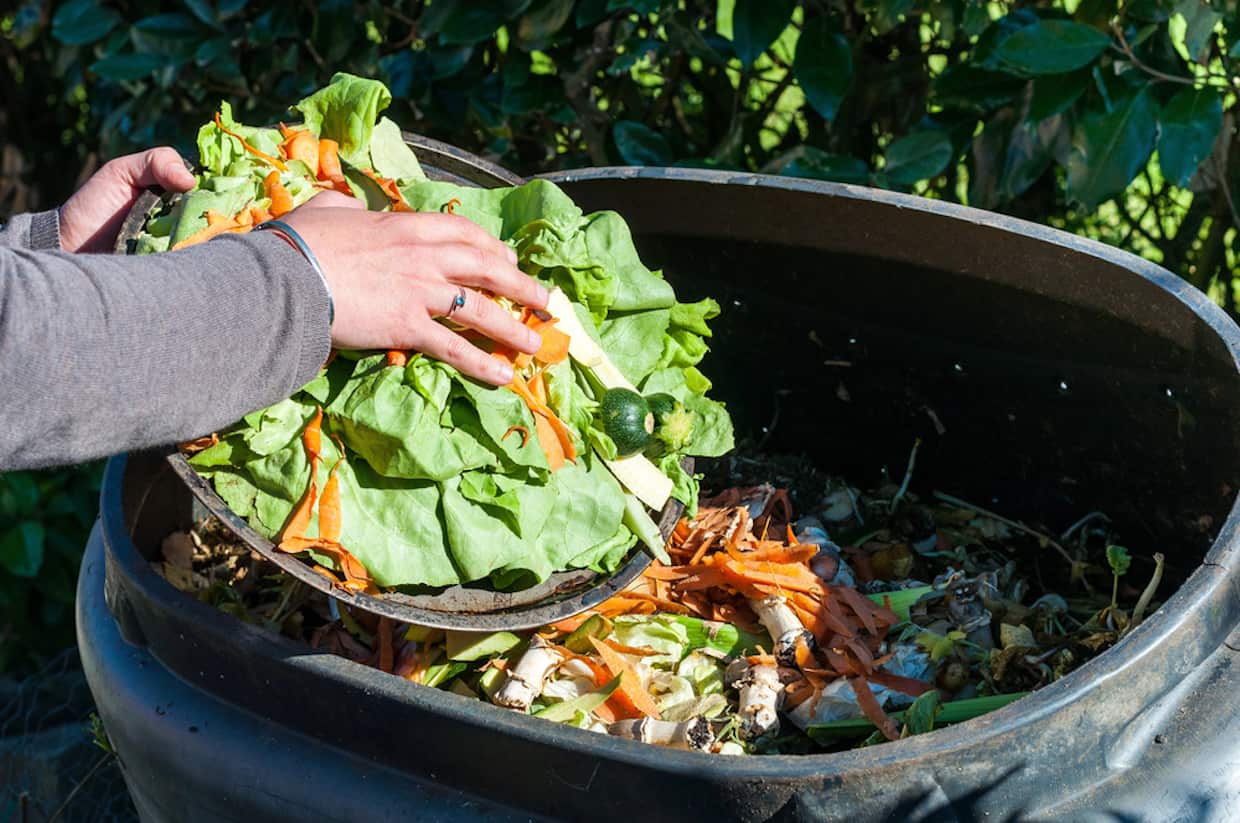Many home gardeners start compost piles before winter to reduce waste and prepare for spring prep. Fall cleanup provides a steady supply of leaves, stalks and other carbon-rich materials that become scarce later in the year. Cooler weather limits pests and odor, letting piles break down gradually and enrich the soil before the next growing cycle begins.

Fall may supply the materials, but productive composting even through winter needs consistent effort. Turning the pile regularly and managing moisture maintains internal warmth, allowing decomposition to continue despite freezing conditions.
Why fall is the best time to begin
Fall yard cleanup reveals many compost ingredients. Dry leaves, pulled annuals and garden debris provide the carbon-rich matter compost piles need. These materials are easier to collect in fall than in other seasons, when fresh greens like kitchen scraps and grass clippings dominate. Many gardeners add them to compost piles to create a balanced mix that lasts through winter.
Cooler weather also helps. It reduces odor, deters pests and allows materials to decompose slowly and evenly. Fall’s mix of green and brown waste makes balancing easier. Building a pile now gives microbes time to work before the freeze. By spring, the decomposed mix can enhance soil structure, retain moisture and support plant health.
Choose a good location
A well-placed compost pile performs better over time. Flat, well-drained ground maintains structure and supports natural drainage. Some sunlight encourages microbial activity without drying the materials too quickly.
Placing the pile near the kitchen or back door makes it more likely to get regular winter use. A spot close enough for convenience but away from wood siding or tree roots prevents moisture buildup and damage. Balancing access and protection keeps the system running year-round.
Start with the right bin or base
Compost systems range from simple open piles to structured bins made of wood, wire or cinder blocks. Others use closed containers like rotating barrels and tumblers to keep things neat. Some pile materials directly on bare soil, which welcomes beneficial organisms.
On hard surfaces, add a base of twigs or straw to allow airflow and avoid moisture. A pallet underneath can also raise the pile slightly while keeping it contained.
Layer greens and browns properly
A balanced compost pile depends on the right mix of carbon and nitrogen. Browns such as dry leaves, cardboard and plant stalks provide carbon, while greens like food scraps, coffee grounds and grass clippings supply nitrogen. Aim for a three-to-one ratio of browns to greens, and chop materials into smaller pieces to help them break down faster.
Layering as you add prevents clumping and promotes airflow, which is key to avoiding odors and rot. Stick to plant-based waste and skip meat, dairy, oily leftovers and pet droppings, which attract pests and slow the composting process.
Turn and tend as temperatures drop
Keeping a compost pile active through fall and into winter requires consistent care. Turning the pile weekly with a garden fork adds oxygen, which fuels microbial activity and helps materials break down. Proper moisture is equally important. Maintain a wrung-out sponge texture to avoid the pile drying out.
Covering the compost heap with a tarp, straw or cardboard traps heat and moisture as temperatures drop. While freezing conditions slow decomposition, microbes remain dormant and reactivate once the pile begins to warm, so composting continues even beneath snow.
Look for compost progress
An active compost pile smells earthy and may release steam when turned. These signs mean microbes are at work. If the pile smells sour or feels soggy, it needs more dry browns and thorough mixing to restore airflow and balance.
A dry pile that stops decomposing needs more moisture and regular turning. If there’s no heat in the center, mix in fresh greens to restart microbial activity. Even in cold weather, decomposers remain dormant inside, so the compost heap will be nearly ready by spring.
Start strong in spring
Fall compost is often ready by the last frost, giving gardeners a head start in spring. Finished compost looks dark, crumbly and smells like fresh earth, which shows that it’s rich in nutrients. Mixing it into beds or containers improves soil structure, supports root growth and cuts back on synthetic fertilizers.
It also improves drainage in clay-heavy soil and provides slow-release nutrients that keep plants thriving all season. Starting in fall transforms garden cleanup into a long-term investment, connecting end-of-season maintenance with next season’s growth.
Fall cleanup fuels spring growth
Starting a compost pile before winter does more than manage fall debris. It sets up a steady supply of nutrient-rich material for spring planting, giving the pile time to break down when built and maintained with the right balance. Composting turns routine cleanup into long-term soil health, helping gardeners reduce waste and boost productivity when it matters most.
Jennifer Allen is a retired professional chef and long-time writer. Her work appears in dozens of publications, including MSN, Yahoo, The Washington Post and The Seattle Times. These days, she’s busy in the kitchen developing recipes and traveling the world, and you can find all her best creations at Cook What You Love.
The post How to start a compost pile before winter sets in appeared first on Food Drink Life.


